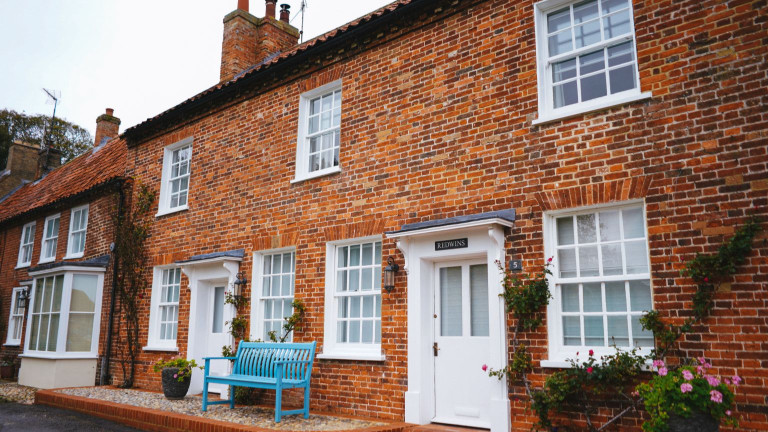Unregulated Bridging Loans: An Overview of Flexible Financing Solutions
Are you in need of flexible financing options in today's fast-paced market? Look no further than unregulated bridging loans. These loans allow individuals and businesses to seize lucrative opportunities without the constraints of traditional financing.
What Are Unregulated Bridging Loans?
An unregulated bridging loan is a type of short-term financing that allows a borrower to bridge the gap between the purchase of a new property and the sale of an existing one.
Unlike traditional loans, unregulated bridging loans are not subject to the same regulatory oversight by the FCA (Financial Conduct Authority). This means that they offer more flexibility and speed in throughout the borrowing process.
Understanding the Unregulated Bridging Loan Process
To take full advantage of unregulated bridging loans, it's essential to understand the application and approval process, as well as the eligibility criteria and necessary documentation.
Application and Approval process
- Loan application – Start by completing the loan application, providing accurate and detailed information about the property and the loan amount required.
- Property valuation – A professional valuation of the property will be conducted to determine its market value, which plays a crucial role in the loan approval process.
- Credit checks and affordability assessment – Lenders will assess your credit history and conduct an affordability check to ensure you can comfortably repay the loan.
Eligibility Criteria for Unregulated Bridging Loans
- Property ownership –Typically, unregulated bridging loans require borrowers to own property, either residential or commercial, which can be used as collateral. Unregulated bridge loans dealing with commercial property, are often called commercial bridging loans.
- Exit strategy – Lenders will assess your ability to repay the loan by evaluating your exit strategy, such as selling the property or refinancing with a long-term loan.
Documentation and Requirements
- Proof of identification – Provide valid identification documents, such as a passport or driver's license.
- Property documents – Furnish necessary property documents, including deeds, title documents, and proof of ownership.
- Financial information – Prepare financial statements, bank statements, and any other documents that demonstrate your financial stability and ability to repay the loan.
By understanding the unregulated bridging loan process, you can navigate the borrowing journey with confidence and increase your chances of securing the necessary funds.
Here's a helpful video to explain further:
Pros and Cons of Unregulated Bridging Loans
Unregulated bridging loans offer unique advantages, but they also come with certain considerations. Here are the pros and cons:
Advantages of Unregulated Bridging Loans
- Flexibility and speed – Unregulated bridging loans provide a flexible and speedy financing solution, allowing borrowers to capitalise on time-sensitive opportunities.
- No regulatory constraints – Unlike traditional loans, unregulated bridging loans are not subject to the same regulatory constraints, providing more flexibility in terms of loan structure and requirements.
- Access to funds for various purposes – Unregulated bridging loans can be used for a wide range of purposes, including property investments, auctions, renovations, and overcoming chain breaks.
Disadvantages of Unregulated Bridging Loans
- Higher interest rates – Due to their short-term nature and quick availability, unregulated bridging loans often come with higher bridging loan rates compared to traditional long-term loans.
- Short repayment period – Unregulated bridging loans typically have shorter repayment periods, requiring borrowers to secure long-term financing or have a well-defined exit strategy.
It's crucial to weigh the pros and cons of unregulated bridging loans carefully, considering your financial situation and specific needs before making a decision.

With this case study we faced a challenging £6M Hampshire property renovation project. Overcoming funding hurdles, we enabled clients to achieve their vision, secure builders' payments, and maximize property value. Take a closer look.
Bridging Loans Direct | Bridge Loan Solution for Renovations on £6M Hampshire Property - Read More »
Common Uses for Unregulated Bridging Loans
Unregulated bridging loans offer immense flexibility in their application. Here are some common scenarios where these loans can be utilised:
Real estate investment and development projects
Unregulated bridging loans can provide the necessary capital for property investments and development projects from the ground up, enabling investors to seize profitable opportunities. Bridging loans concern the expansive options of real property finance, and they can be tailored for many different property projects, or commercial property purchases.
Property auctions and purchases
When participating in property auctions or requiring quick funds for property purchases, unregulated bridging loans offer an efficient financing solution.
Renovations and refurbishments
Whether it's renovating a property for resale or upgrading an existing property, unregulated bridging loans can cover the costs of renovations and refurbishments.
Chain breaks and property down payments
Unregulated bridging loans can bridge the financial gap caused by chain breaks or provide the necessary funds for property down payments.
Business Loans
Unregulated bridge loans extend beyond property transactions and can be also be used as business bridge loans, especially during periods of limited liquidity. These loans can be used for various business expenses, such as acquiring essential machinery and equipment, purchasing new business premises, expanding existing facilities, or addressing tax obligations to HMRC.

Discover how a determined Scottish property investor turned their ambitious development vision into reality with the help of bridging finance. Overcoming challenges and complexities, we successfully secured a £910K loan for the client, kickstarting their dream investment journey.
Bridging Loans Direct | Bridging Loan To Finance An Investment Property In Scotland - Read More »
Are there Risks with an Unregulated Bridging Loan?
All types of loans under bridging finance present some level of risk. Unregulated loans, despite the name, are no less or more risky than any other. However, to mitigate potential risk, it is advisable that borrowers first consider a number of factors before taking out an unregulated bridge loan.
For instance, unregulated bridging loans have higher interest rates, which ultimately makes the overall cost of borrowing more expensive.
Additionally, market fluctuations can impact the success of the loan. Rapid changes in property values or market conditions may affect your ability to repay the loan. On top of that, there are shorter repayment periods which can pose their own challenges depending on your circumstances.
If you're unable to secure long-term financing or fail to implement a successful exit strategy, repaying the loan within the agreed-upon terms can be difficult.
To address these risks, assessing affordability and exit strategies is crucial.
Carefully evaluate your financial situation to ensure you can afford the loan and have a viable plan in place to repay it.
It is always best to seek professional advice and conduct due diligence. Consulting with financial advisors, an expert unregulated loan broker – such as Bridging Loan Direct – is highly recommended to gain expert guidance and ensure a comprehensive understanding of the loan terms and associated risks. Additionally, if you need advice regarding repayment or regarding debt and money, you can take a look at these helpful resources - Options for dealing with your debts
By evaluating these risks and considering the mentioned factors, you can make informed decisions and mitigate potential challenges - especially avoiding debt and repayment issues.
"Embracing the opportunities of unregulated bridging loans comes with a need for cautious consideration. As with any financial venture, risks exist – from higher interest rates to market volatility. Expert guidance and diligent planning are your tools to navigate these challenges and secure a successful borrowing experience."
- Fergus Allen - Head of Bridging
Obtaining an Unregulated Bridging Loan
Navigating the market of unregulated bridging loans can feel overwhelming with the multitude of lenders and bridging loan companies available. To simplify the process and ensure a smooth experience, it's highly recommended to enlist the assistance of a trusted bridging loan adviser.
By partnering with a reputable broker like Bridging Loans Direct, you can access expert guidance and discover the best bridging loan, tailored to your specific needs.
Take the first step towards securing your ideal unregulated bridging loan today by reaching out to Bridging Loans Direct at 0800 368 9344. Our team of professionals is dedicated to empowering your financial decisions.
Alternatively, you can book an initial consultation. Trust us to help you find the most suitable unregulated bridging loan solution.
FAQs
What are the differences between regulated and unregulated bridging loans?
Regulated bridging loans have regulatory requirements set by the Financial Conduct Authority (FCA) to protect borrowers. Unregulated bridging loans do not have the same protection but offer more flexibility and fewer restrictions. A regulated bridge loan, known also as a residential bridging loan, is only used for residential property.
Can I use an unregulated bridging loan for non-property-related purposes?
Yes, unregulated bridging loans can be used for non-property-related purposes. They are not limited to property transactions and can be utilised for various needs such as funding business expenses, purchasing equipment, or paying tax bills during periods of non-liquidity.
What factors affect the interest rates of unregulated bridging loans?
The interest rates of unregulated bridging loans can be influenced by several factors, including the lender's criteria, loan terms, the borrower's financial profile, the loan amount, and the security provided. Since unregulated loans are not subject to FCA regulation, the interest rates may vary and could be higher compared to a regulated bridging loan.
How long does the approval process for unregulated bridging loans typically take?
The approval process for unregulated bridging loans can vary depending on the lender and the complexity of the loan. Generally, the process is quicker than traditional bank loans, and it can often be completed within a working week. However, the timeline may differ based on individual circumstances and the efficiency of the application process.

